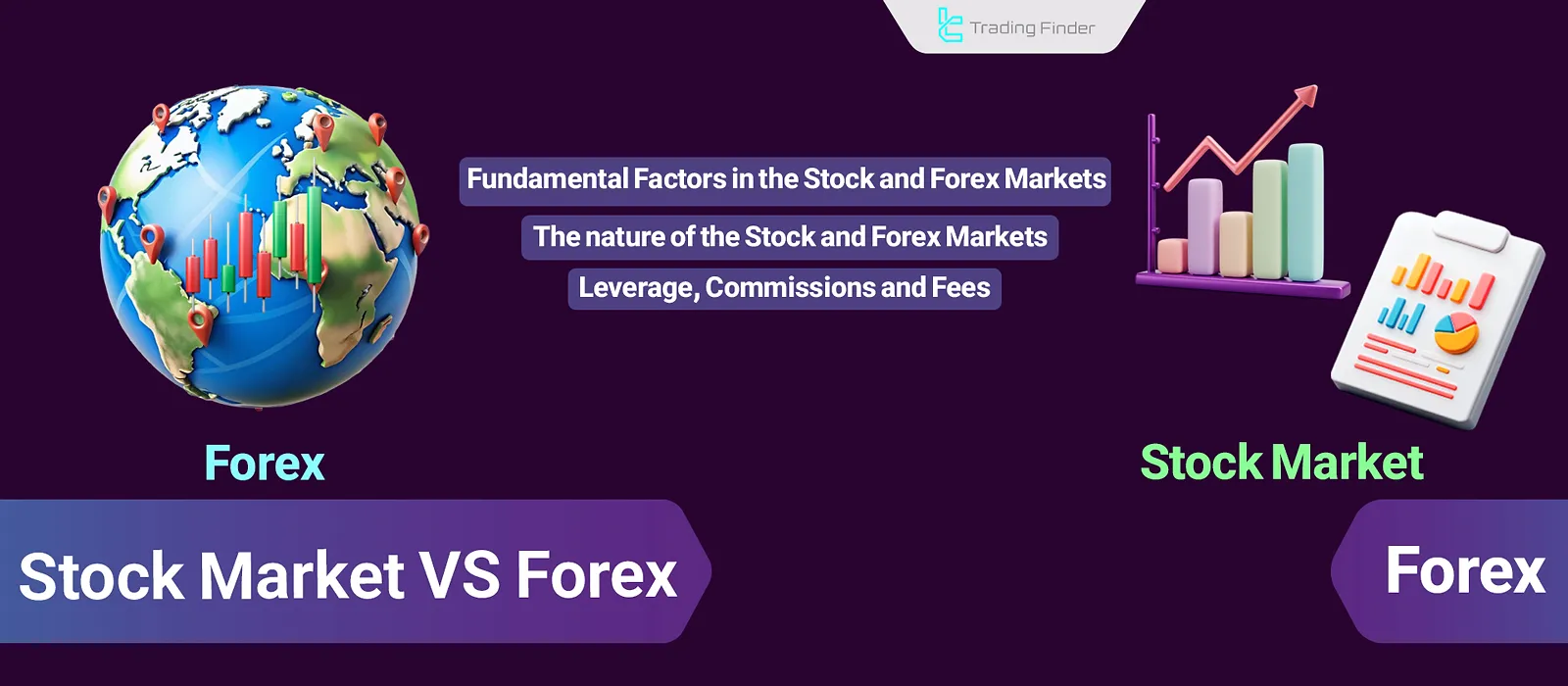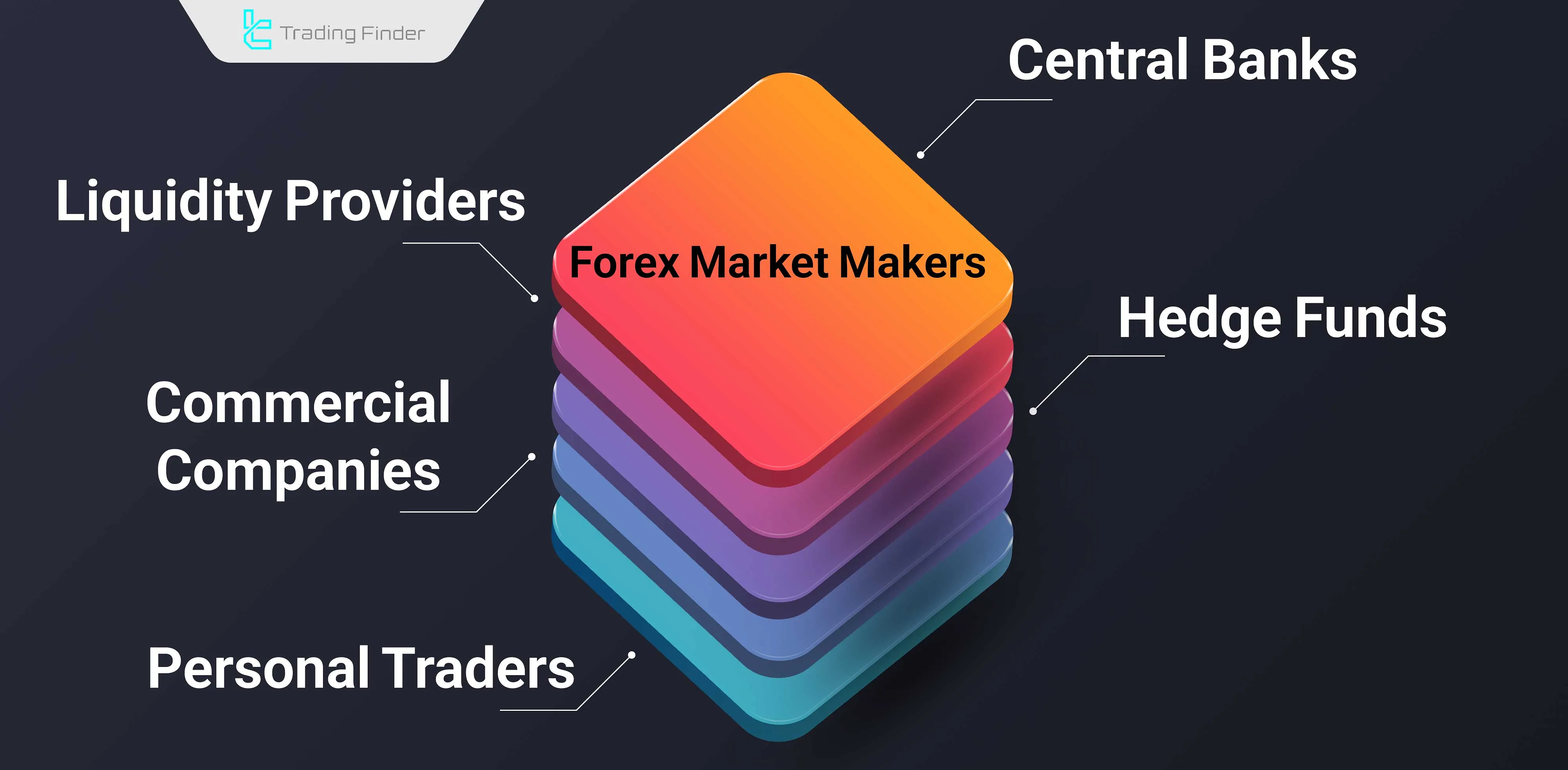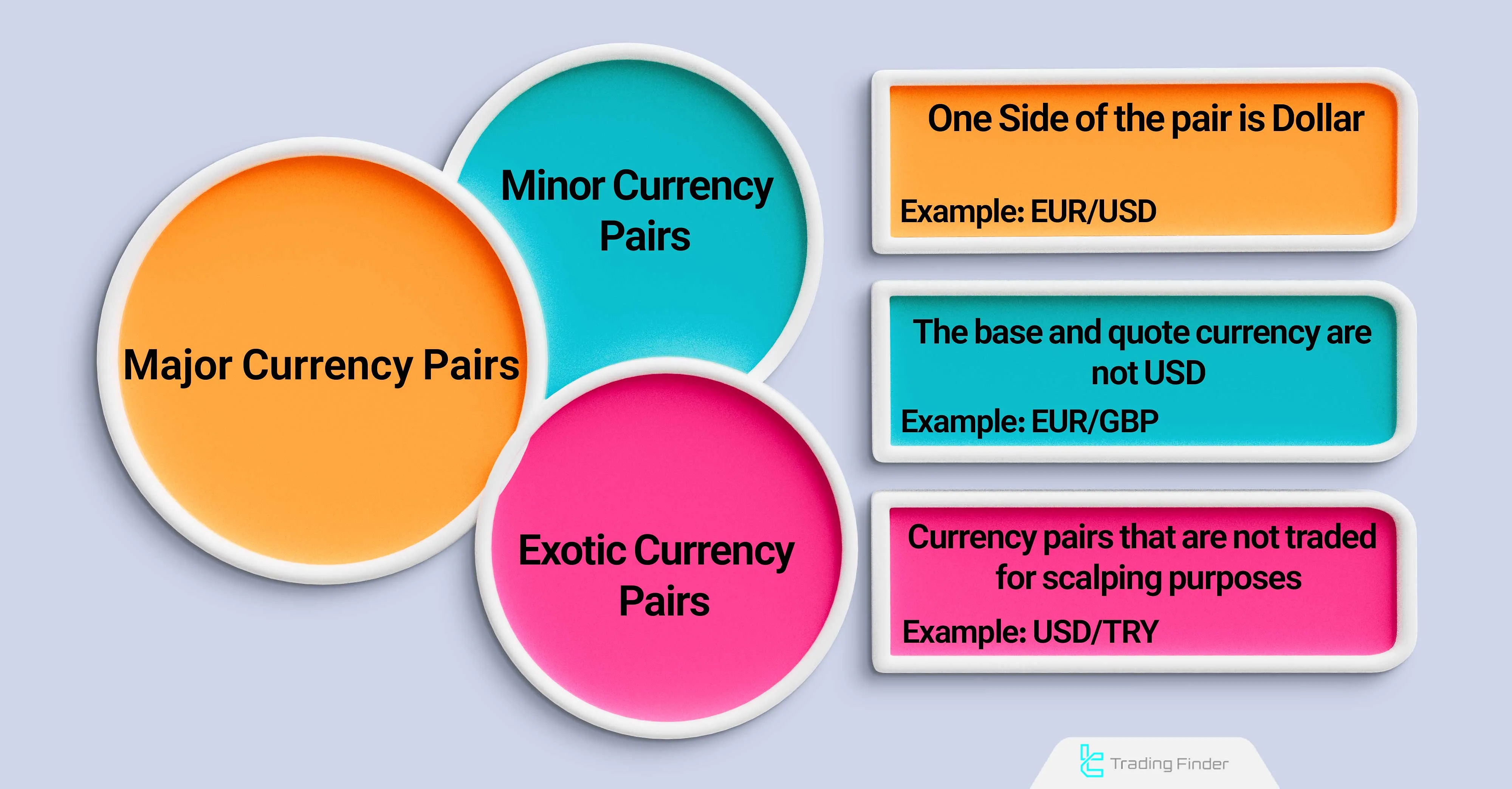The stock market and Forex market differ in terms of nature, trading hours, leverage, fees, and fundamental analysis methods.

Traders in the Forex market examine all factors affecting the global economy and currency prices.
In contrast, stock traders not only consider macroeconomic factors )such as production, GDP economic growth, and the labor market(, but also develop expertise in analyzing financial statements and assessing the intrinsic value of equities.
What is the Forex Market?
Forex refers to the global market for trading currency pairs. For example, the US Dollar against the Euro is displayed in Forex as "EUR/USD," buying it means buying the Euro against the Dollar.
In Forex, traders speculate under CFD (Contract for Difference) agreements without owning the underlying asset. Therefore, trading EUR/USD means profiting from price fluctuations.
In Forex, currency pair fluctuations are often shaped by market makers. Forex market makers are shown in the following image:

What is the Stock Market?
In the stock market, shares of companies are bought and sold. For example, by buying Apple shares, you become a partial company owner and share in its profits and losses based on the number of shares purchased. In essence, by buying shares, you will own the asset.
Comparison of Stocks and Forex
Stocks and Forex are two markets with different natures, where all parameters (trading hours, leverage offered, liquidity level, and the type of fundamental analysis) differ. Comparison of stocks and Forex at a glance:
| Feature | Forex | Stocks |
| Nature | Trading currency pairs | Trading company shares |
| Trading Hours | 24/5 | Determined by the stock exchange |
| Leverage | High (usually up to 1:500) | Lower than Forex (e.g., up to 1:5) |
| Liquidity | Very high (daily $7 trillion) | Varies depending on the stock |
| Fundamental Analysis | Global economy analysis | Macroeconomic analysis, financial statements, and commodity markets |
Trading Hours in the Stock Market and Forex
When comparing Forex vs Stocks, Forex markets operate 24 hours a day, whereas stock markets have fixed trading hours.
Comparison of stocks and Forex in terms of trading hours:
Parameter | Stocks | Forex |
Start Time | Varies by country (usually 8-9:30 AM on business days) | Monday 0:00 (UTC) |
End Time | Varies by country (usually 3-5:30 PM) | Friday 23:59 (UTC) |
Business Days | 5 days a week | 5 days a week |
Trading Costs [Spread, Commission, Fees, Slippage, and Swap]
In Forex brokers and stock brokerage firms, the types of costs for traders differ.
Comparison of stocks and Forex in terms of broker and brokerage costs:
Cost Type | Forex | Stocks |
Spread | Varies by currency pair, usually lower than stocks | Varies by stock and brokerage, usually higher than Forex |
Commission | No commission in many brokers | Varies based on trade volume or number of shares purchased |
Swap | Varies by currency pair and position | No overnight fees (except for margin trading or ETFs) |
Taxes | In some countries | In some countries |
Leverage
Leverage allows traders to trade with multiples of their capital. This tool multiplies profits and losses and increases risk.
Feature | Forex | Stocks |
Maximum Leverage | Usually up to 1:1000 or more (depending on the broker and country) | Usually between 1:2 and 1:10 (depending on the stock and country) |
The currency pair market offers higher leverage, ranging from 1:50 to 1:500. However, leverage in Forex is subject to strict regulations; for example, in Europe, the maximum leverage allowed for retail traders is 1:30.
In the stock market, leverage is lower; however, higher leverage (e.g., 1:20) is offered in some CFD contracts.
Asset Diversity
In Forex, currency pairs are divided into three main categories. In the stock market, company shares, commodities, and ETFs are tradable.
Types of Currency Pairs in Forex
Currency pairs in Forex are divided into major, minor, and exotic pairs:

Types of Assets in the Stock Market
- Company Shares: By buying company shares, you become a partial owner and share in the profits and losses based on the volume of shares purchased;
- Commodities: Tradable assets typically consisting of natural resources, agricultural products, and metals;
- Exchange-Traded Funds (ETFs): Investment funds that include a mix of stocks, bonds, commodities, and other assets designed to diversify investment portfolios at low cost.
Fundamental Analysis
From a fundamental perspective, anything that affects macroeconomic indicators, such as economic data, central bank meetings, and even political risks like wars or elections, impacts currency pair trends and is analyzed in fundamental analysis of currency pairs.
In fundamental stock analysis, in addition to macroeconomic analysis, labor market conditions, and economic growth, financial statement analysis is also required. Financial statements examine the company's revenue and earnings per share.
A key difference in Forex vs Stocks is that Forex trading is more influenced by global economic events, while stock trading is driven by company performance and industry trends.
Liquidity and Market Depth
While Forex, with a daily trading volume of approximately $7 trillion, is the largest financial market, liquidity in stocks varies by market. Comparison table of stocks and Forex in terms of liquidity and trading volume:
Feature | Forex | Stocks |
Liquidity | Very high | Varies by stock and market |
Market Depth | Deep [high liquidity in all currency pairs] | Market depth depends on volume and type of stock |
Price Volatility | Usually high due to large trading volumes and global news | Lower volatility in some stock markets with price limits |
Trading Volume | Daily over $7 trillion | Varies by stock exchange, usually lower than Forex |
Conclusion
The stock market and Forex have different natures. Forex is a suitable option if you are looking for a market with high liquidity, 24/5 trading, and high leverage.
On the other hand, if you have the necessary expertise for financial statement analysis and are looking for long-term investment with lower risk, the stock market is a suitable platform for trading.





